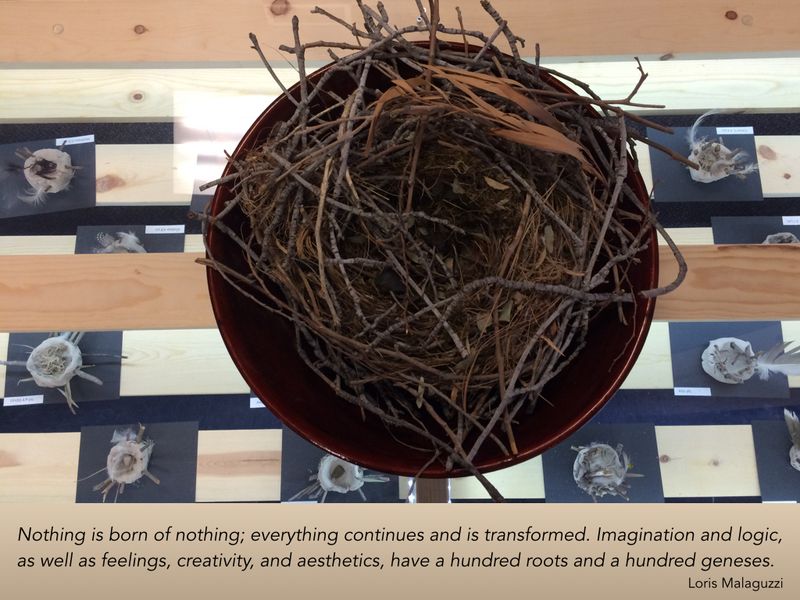Building Nests

[vc_row][vc_column][vc_column_text]There were nests, everywhere. Giant nests made of branches; smaller ones built of tinsel and string; tiny ones of clay and sticks. It started when one of the children discovered a nest outside and brought it into the classroom. One of the teachers was terrified – it played right into her deepest phobias regarding birds – but she knew that she had to be brave. She knew that facing and moving beyond her own fears was necessary for the classroom community to take flight.Nicole Simpson-Tanner and I walked through the nest-filled classrooms at Richman Elementary School this weekend with 130 fellow teachers, admiring their construction and thinking about ours. Nests are endlessly inspiring: built from seemingly random pieces found opportunistically, they are structures strong enough to support their precious, fragile cargo. So, too, our approach to teaching – supportive, strong architectural foundations, open to beauty that arrives from many different directions.
Richman Elementary School is part of Fullerton School District, an early childhood through grade eight district in Southern California which has sent dozens of teachers and administrators to Opal School for inspiration as they’ve been building their nests. Fullerton has also looked elsewhere – including Bev Bos’s Roseville Community Preschool and to the Tucson Children’s Project and Ochoa Community Magnet School. To celebrate and further their work, they invited representatives from each of those sites to continue that learning through Fullerton School District’s educator symposium, a day of professional development.
Like Opal School, Fullerton is inspired by the schools of Reggio Emilia. Reggio informs Fullerton’s decision to build from a strong image of the child and to rethink the role of the environment, the arts, and the power of documentation to employ conditions – nests – that are conducive to discovery and welcome children to lead the learning. Fullerton is doing this work with families who experience the burden of America’s inequalities, which makes their work incredibly important in fighting for the rights of those children as well as providing a beacon of light for others. As Marilee Cosgrove, the district’s director of early childhood programs, told the group, “When you say ‘we can’t do it because of this barrier or that barrier,’ we’re hear to tell you that you can.”
Risk-taking was a steady theme throughout the day. Bev Bos told the group that children who are afraid to risk rarely become fluent readers. This work depends on adults ready to take risks as well. Loris Malaguzzi wrote, “Formulas, there are none. Strategies, there are many.” We need to be in dialog with each other to open the doors to those many possible strategies. We thank Fullerton School District for welcoming us into that rich conversation.[/vc_column_text][/vc_column][/vc_row][vc_row][vc_column][stm_post_author][/vc_column][/vc_row]
